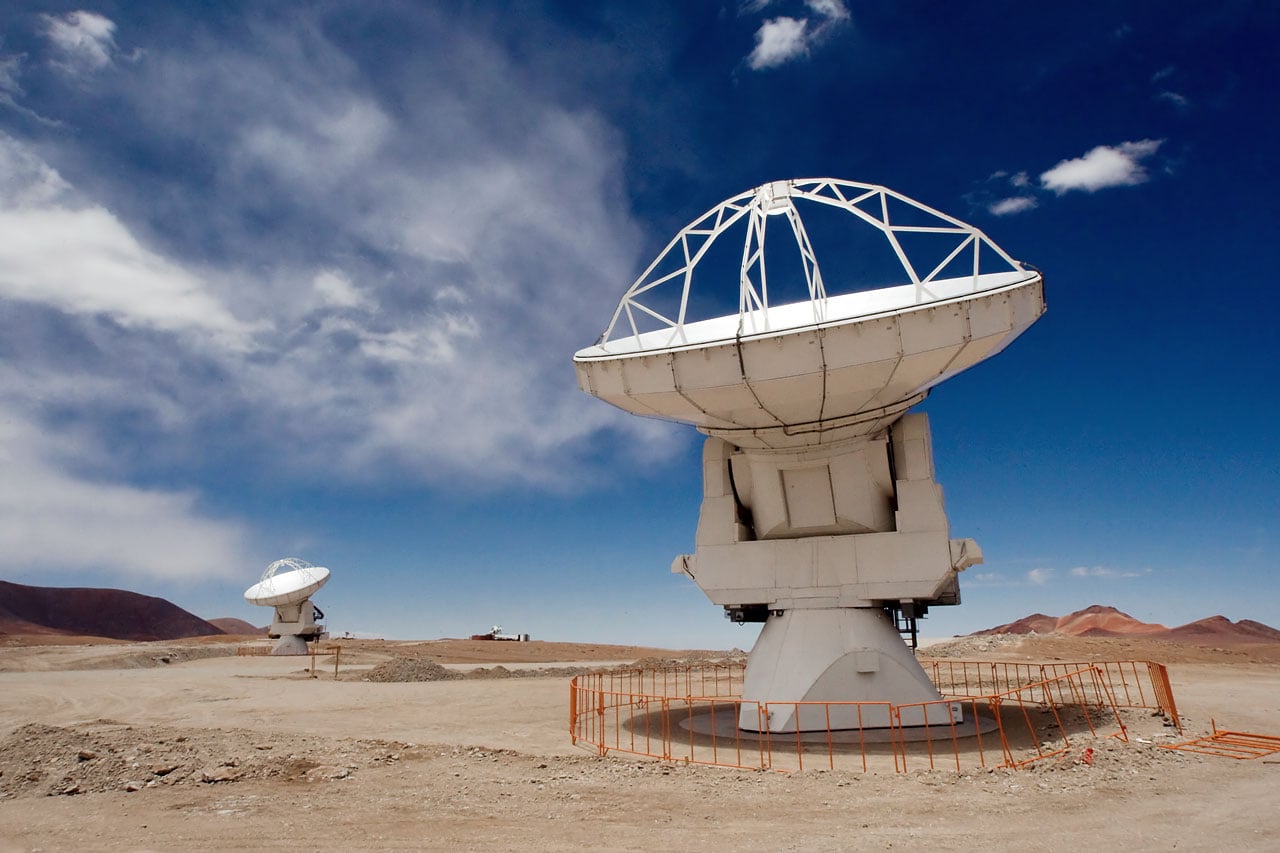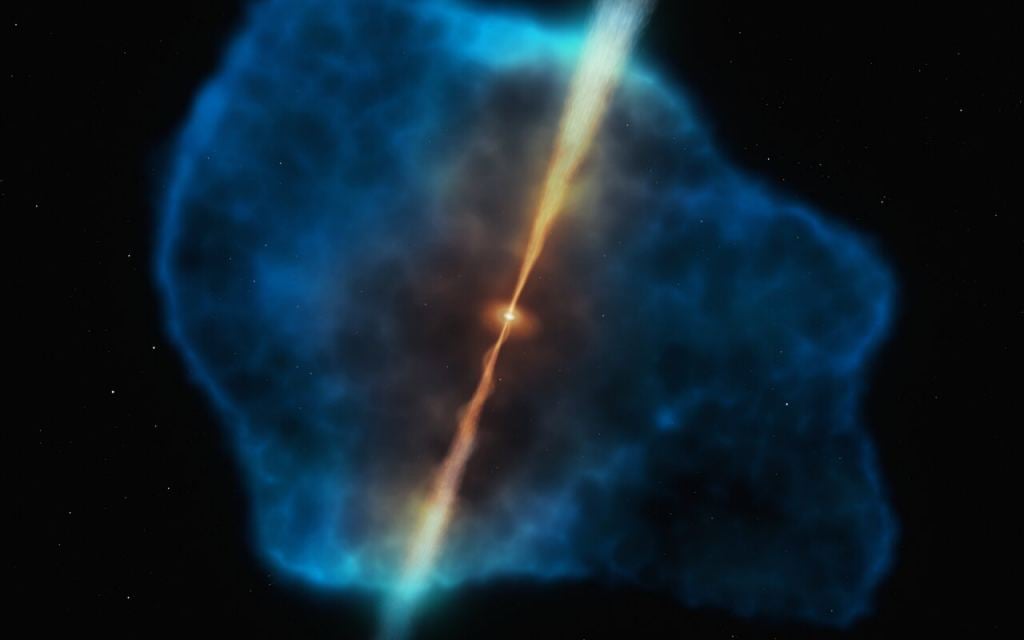Quasars, short for quasi-stellar objects, are one of the most powerful and luminous classes of objects in our Universe. A subclass of active galactic nuclei (AGNs), quasars are extremely bright galactic cores that temporarily outshine all the stars in their disks. This is due to the supermassive black holes in the galactic cores that consume material from their accretion disks, a donut-shaped ring of gas and dust that orbit them. This matter is accelerated to close to the speed of light and slowly consumed, releasing energy across the entire electromagnetic spectrum.
Based on past observations, it is well known to astronomers that quasars are obscured by the accretion disk that surrounds them. As powerful radiation is released from the SMBH, it causes the dust and gas to glow brightly in visible light, X-rays, gamma-rays, and other wavelengths. However, according to a new study led by researchers from the Centre for Extragalactic Astronomy (CEA) at Durham University, quasars can also be obscured by the gas and dust of their entire host galaxies. Their findings could help astronomers better understand the link between SMBHs and galactic evolution.
This study was led by Carolina Andonie, a Ph.D. student from the CEA, and was supported by Professor David Alexander, Dr. Claire Greenwell, and Dr. Annagrazia Puglisi. They were joined by researchers from the National Observatory of Athens (NOA), the European Southern Observatory (ESO), the Instituto de Astrofísica de Canarias (IAC), the International School of Advanced Studies (SISSA), the National Institute of Astrophysics (INAF), and multiple universities. Their paper recently appeared in the *Monthly Notices of the Royal Astronomical Society*.
In the standard quasar model, the accretion disk is obscured by the dusty torus surrounding the galaxy's center. But for their study, Andonie and her colleagues explored the possibility that quasars could also be obscured by the gas and dust in the interstellar medium (ISM) of "starburst galaxies" - very compact galaxies that are only a few thousand light-years across. These same galaxies have extremely high star formation rates (SFR), adding more than 1,000 solar masses annually. In contrast, larger galaxies like the Milky Way add about 1 to 2 solar masses annually. As Andonie told Universe Today via email:
"In a previous work, we found that quasars that are affected by large amounts of obscuration are more likely to reside in galaxies rapidly forming stars, typically known as "starburst" galaxies. Hence, we decided to further investigate the obscured quasars residing in starburst galaxies to understand what was happening with those systems. Then, in this research, we found that in some extreme cases, the galaxy itself is producing large amounts of obscuration."
Using data obtained by the Atacama Large Millimeter Array (ALMA) in the infrared spectrum, the researchers observed a sample of 578 very dusty quasars located about 7.7 to 11.5 billion light-years away. They found that many of these quasars were located in starburst galaxies, which maintain high SFRs because of the massive amounts of dust and gas they contain. The formation of new stars causes clouds of gas and dust in the ISM to get stirred up and surround the quasar, blocking out its light.
Based on their findings, the team estimates that in about 10-30% of very rapidly star-forming quasars, the host galaxy itself hides the quasar from view. This appears to happen only when the quasar is growing intensely. These results provide new insights into quasars, a very luminous subclass of active galactic nuclei (AGN). These represent an early stage of galactic evolution when galaxies are rich in gas and dust, the building blocks of new stars.
According to Andonie, the ALMA data was crucial for two reasons. On the one hand, it allowed her and her colleagues to calculate the amount of gas in the sample galaxies. On the other, it allowed the team to constrain the size of these galaxies:
"With these two measurements, we could then calculate the density of the gas forming the stars. Quasars obscured by large amounts of gas and dust are more likely to live in starburst galaxies. In these systems, the starburst galaxies have very large amounts of gas and dust forming stars, material which does not allow the light coming from the quasar to escape. This material can be as dense as a wall, hence, we cannot see through it with normal optical light. Sometimes, even the X-ray fails to penetrate the very dense material. Hence, we need infrared observations to see the quasar."
Specifically, these results will improve our understanding of the relationship between galaxies, the supermassive black holes (SMBHs) at their centers, and how they co-evolve over time. "We expect to find more obscured quasars when we look at starburst galaxies than found in normal galaxies," Andonie summarized. "It is likely that this rapid galaxy-supermassive black hole growth is a key earlier phase in the evolution of galaxies and quasars."
*Further Reading: Durham University*
 Universe Today
Universe Today


